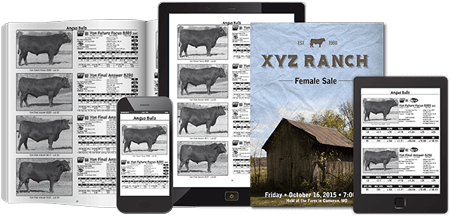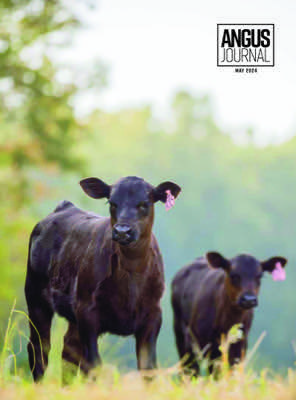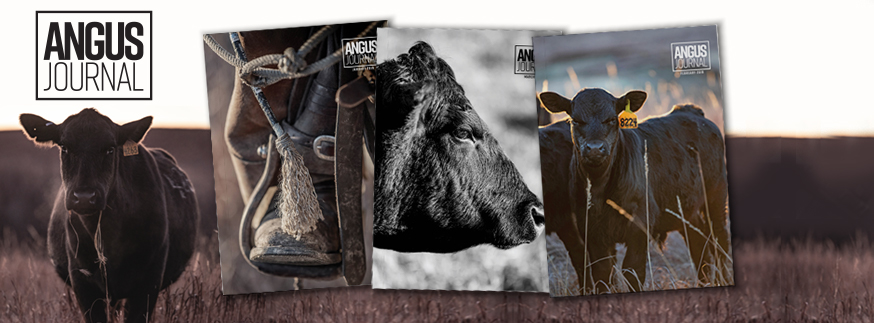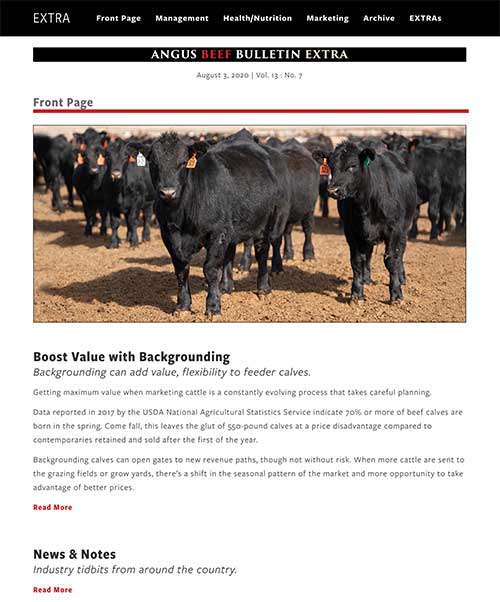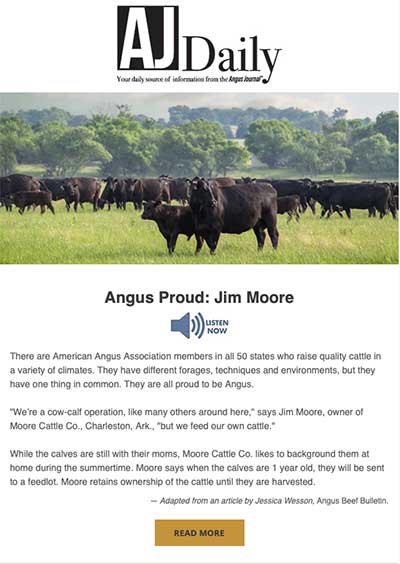Angus Genetics Inc. Announces Updates Coming May 27
By Briley Richard
|
American Angus Association
5/26/2022
Release Hair Shedding EPD:
Early summer hair shedding is an indicator trait for heat tolerance and tolerance to fescue toxicosis. Hair shedding is evaluated on a 1-5 visual appraisal scale, where 5 is a full winter coat and 1 is completely slicked out winter coat. After two years of research and collaboration with the University of Missouri and other universities across the Southwest, the Hair Shedding expected progeny difference (EPD) will be released from a research EPD to a production EPD. This means it will be reported weekly through the Association’s genetic evaluation and available through Online Pedigree Look-up. Additionally, this is a genomically enhanced EPD. Hair Shedding is a moderately heritable trait, 0.36, and the breed average EPD for current sires in the Angus breed is 0.56. As for favorability, a lower EPD indicates earlier shedding. To view the Hair Shedding scoring guide, click here. To read more about the new production EPD, click here.
Angus x Dairy Index Update:
The Angus-on-Dairy $Value Indexes were launched in 2020 as a dairy crossbreeding systems tool to help select Angus bulls, leading to increased profitability. To aid this system, two indexes were developed — Angus-on-Holstien $Value ($AxH) and Angus-on-Jersey ($AxJ). Since their inception, these $Values gained popularity and nationwide recognition. Individuals have used these tools for both bull and female selection to develop genetics to target the beef-on-dairy industry. To increase the usability of these indexes, starting on May 27, breeders and customers will be able to access these values via Online Pedigree Look-up. This allows for increased visibility and usability for those interested in targeting genetics for this dairy crossbreeding scheme. Please note the $AxH and $AxJ percentile ranks will be aligned with the non-parent bulls, non-parent females, current sires, and current dams categories present for all other EPD traits.
Annual Economic Assumption Update:
Each year, the costs and revenue prices underlying the bio-economic model, which drive the Association’s $Values, are updated. This annual update is assembled using data provided by CattleFax. The economic assumptions implemented each year are the average of the previous seven years of data – the 2022 economic assumptions are based on prices recorded from 2015 to 2021. This year’s biggest changes are a result of weaned calf sale price and ration cost. In May 2021, the economic assumptions were based on average prices from 2014-2020, which included a weaned calf price of $182/cwt for steer calves and $168/cwt for heifer calves. In the May 2022 update, the exchange of 2014 with 2021 lowered the average calf price, and lands the 7-year rolling average at $172/cwt for steer calves and $158/cwt for heifer calves. Additionally, ration cost and days on feed continued to climb. Ration costs increased from $171 to $178 per ton, while time on feed increased slightly from 240 to 246 days for calf-feds and 168 to 170 days for yearling animals. A slight increase in quality premiums was realized. The biggest changes producers will see will be in terms of Weaned Calf Value ($W), where the breed average for Current Sires decreased by $4. Maximum decreases for individual sires was $15.
Overall, the above updates did not result in substantial changes to individual $Values. Updates to economic assumptions resulted in correlations above 0.99. Even with these extremely high correlations, some individual animals can change. The largest decrease in $M, $B, and $C across the 109,560 nonparent bulls were -$4, -$5, and -$10, respectively. Overall, breeders can expect sires to rank very similarly when the 2022 assumptions are implemented. For more information on $Values, click here.
Annual Update Genomic Scores:
While GE-EPDs update on a weekly basis, genomic scores are only updated once a year. This annual update will take place on May 27, 2022. The update includes a larger reference population (n= 1,180,273), which genomic scores are ranked against. With that, genomic scores are a by-product of the genetic evaluation, so as EPDs are updated, genomic scores will be updated as well. It is always preferable to use GE-EPDs when making selection decisions, and the updates to these genomic scores will not affect the GE-EPDs themselves. To learn more about GE-EPDs, click here.

